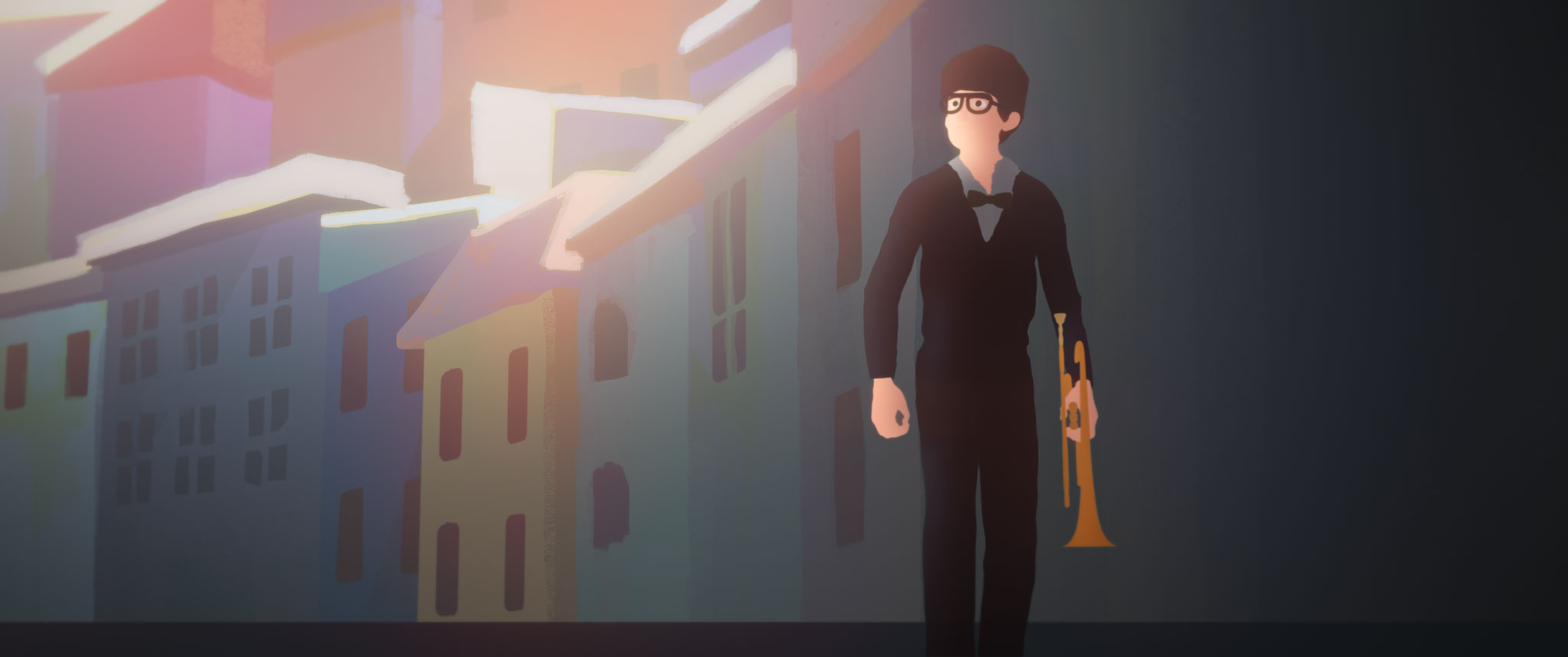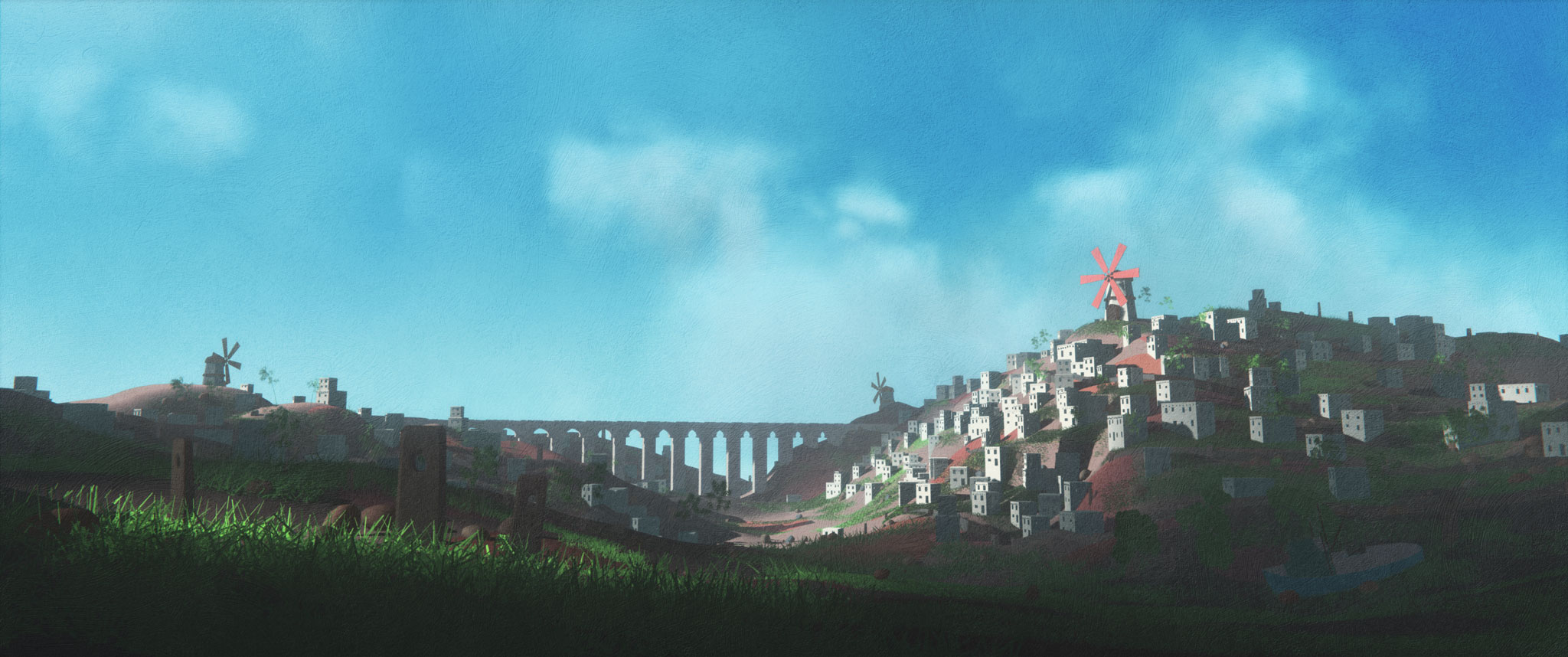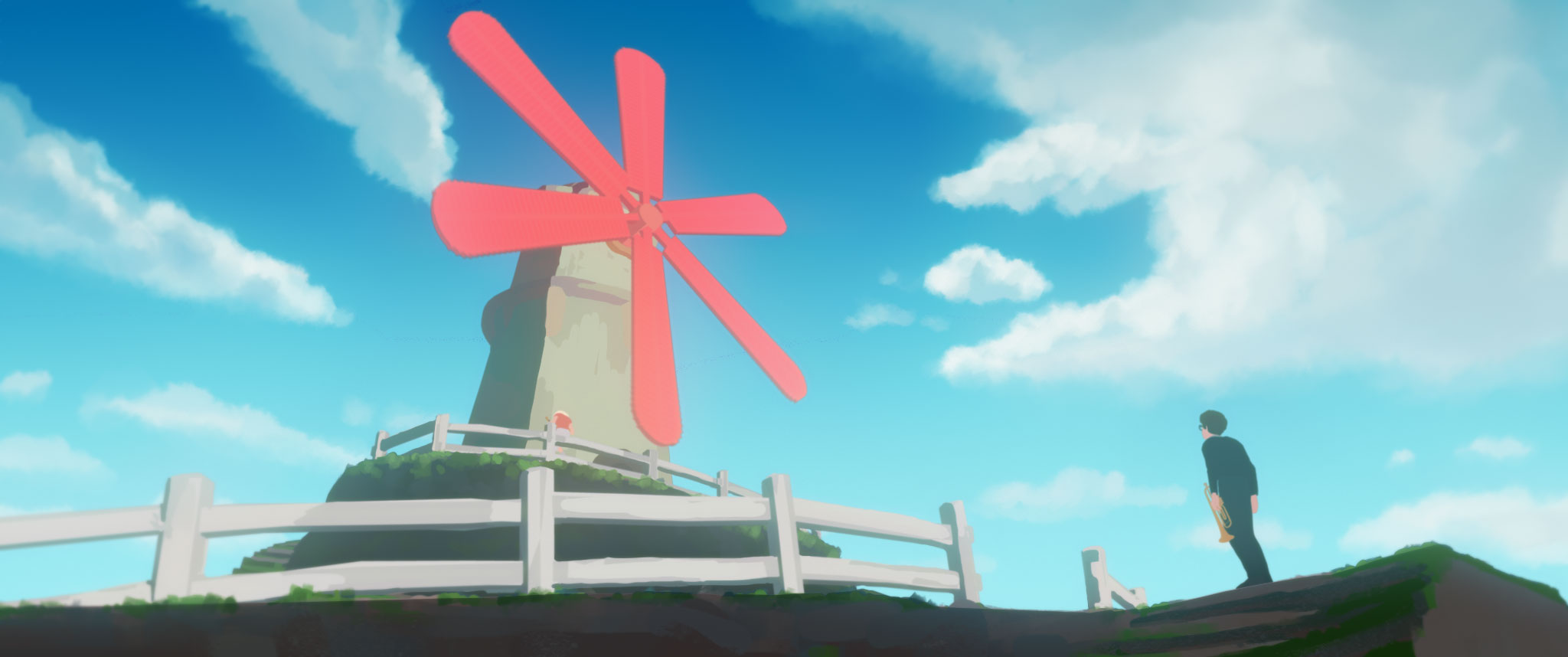
There are a number of reasons I love independent filmmaking, but one of the main attractions has to be the freedom allowed to filmmakers when they’re not constrained by studio expectations and financial implications. Whether it’s the unexpected storytelling or boundary pushing production that comes as a result of this, it always feels like there’s something truly exciting when you stumble upon a really innovative, rewarding and entertaining film in the field. This is exactly how I felt when I came across the work of today’s featured filmmaker Gints Zilbalodis. Having stumbled upon the Latvian animator’s work in early 2014 when he released his third short film Priorities, I was instantly struck by his unusual filmmaking approach. Utilising long-takes and a hand-held camera style to tell his story – his work felt so distinct and so unlike anything else I was watching at the time. Now back with his fifth short Inaudible – the tale of a musician who has recently lost his hearing and struggles to adapt to his new life – Gints still feels like he’s eager to push boundaries and tell the stories he wants to tell. We speak to the filmmaker about the inspiration behind his latest narrative, making dialogue-free films and his unusual workflow.
Inaudible feels like a very emotive piece, where did the inspiration for the film come from?
Like all of my films, I consider this to be a personal story. I’m not a musician and I’m not deaf. But just like the main character I’ve been in situations in which I’ve been frustrated by the difficulty of communication, both verbally and through art. And I’ve also been lucky enough to feel the opposite of that. Moments when you’re able to connect with people or they are moved by something that you’ve created are very precious.
I think that my visual style is mostly naturalistic, but I use sound more abstractly.
 Like with your previous films, this latest piece is dialogue free, what is it that appeals to you about telling stories this way?
Like with your previous films, this latest piece is dialogue free, what is it that appeals to you about telling stories this way?
When there’s no dialogue the visuals and the sounds have a greater role in the storytelling. These kinds of stories don’t need to be translated and are more accessible to people from different cultures. That and I can’t write good dialogue.
Not only is Inaudible dialogue-free, the sound design feels like it plays a major role in the success of the film – what were you hoping to achieve with the score and FX for this film?
That was a big part of the inspiration for this story. I thought that with no rules, Bertrams (the composer) and I would have a lot of fun with the sound and the music, but this turned out to be the most challenging film so far – at least sonically.
Sound design might be my favorite part of the whole process. When done right sound turns a good film into a great one. It’s relatively easy for me. Unlike writing or animating where you face the blank page of infinite possibilities, sound has something to react from (not that it always has to). Sometimes I add sounds whose sources are never actually shown on the screen to suggest that the world is bigger than is shown in the frame. Sound can help increase the subjective perception of the character. I love to do this. I think that my visual style is mostly naturalistic, but I use sound more abstractly. As long as it doesn’t distract from the viewing experience you can really go anywhere with it. The chance to do something unusual with sound design and to give it a significant role in storytelling was a large part of what originally inspired me to do this film.
I’ve collaborated with Bertrams on most of my films. We grew up together and share similar tastes so it’s easy to communicate my ideas about the music to him. In this film music has a big part in storytelling. Knowing that Bertrams plays the trumpet, I decided to have the film’s protagonist be a trumpet player. I think many film composers are indistinguishable from each other because they all have received the same kind of training and they try to fit into the industry. Since composing music for films is not Bertrams’ primary occupation, I think his work really stands out (in a good way, of course).

You also mention the importance of colour in the film on your Tumblr account, describing your latest short as having a “more adventurous colour palette” – why did you take this approach for this film and what can you tell us about the importance of red in the film?
I noticed that my previous films were dominated by blue and orange hues. Which is fine since these colors are very common in nature, but this time I wanted to try something new. The shots are much quicker and I used to distinct colors for clarity. It’s important that the audience don’t get confused. All of the main characters have their own color that represent their personality and help them stand out from the crowd. The color red is love and passion. It pops out very strongly against the dark blue clouds or the green hills. So basically in Inaudible color is used not only for emotion but also for information.
The color red/pink is very important, which in this story reminds the main character of the love he has for music.
In Priorities it was important to me to convey the aspect of real-time which is great for immersing the audience in the environment, but it also limits the diversity of colors. This story includes many montage sequences and the change of color is useful for showing the change of time. I chose not to rely on the movement of the camera to tell the story but rather use other tools like editing, sound design, music and color to fill that void. Also the color red/pink is very important, which in this story reminds the main character of the love he has for music.


Once again it feels like you’ve created a really detailed on-screen universe, with backgrounds and character design being stand-out elements of the aesthetic. What can you tell us about the production of the piece?
Just like my last few films the crew consisted only of the composer doing the music and me doing everything else. It took about 7 months to make.
I wrote the script for this film only after I had animated it. I started with a rough story outline and jumped straight into animation skipping storyboards. Then I “shot” it similarly to a live-action film, choosing many different angles and then seeing how they fit together in the edit. After that I polished the animation and rearranged the environment for the particular camera angles they were seen from. The story was never set in stone and kept evolving until the very end of the production. If I had an idea while doing the sound mix that would improve the story, I would go back and reedit or reanimate. Moments intended for the ending of the film ended up in the beginning and vice versa. The original ending was abandoned midway through and I came up with a new one. But almost no character animation was wasted, because I started with the parts of the story I was most confident with. When these were edited together I animated the “in-between” scenes that link the story together and make it more fluid. When I was looking for funds to finish the film the financiers required a screenplay. So I wrote it. Many people think that storytelling is only words on the page, but it’s much more than that.
Just a week before the release I decided to completely reinvent the beginning of the film.
Maya was used for character animation and sketching out the backgrounds using very rough models, which were later painted over in Photoshop. This was possible because the camera was static during the entire film. All of the lights were added in After Effects. The music and the sound design were done in Logic Pro X.
I was excited to make a film with extended scenes of music, because I think music and moving images are a perfect match. I wanted to explore a different editing and cinematography aesthetic. In my previous films I’ve used a very mobile handheld camera and long takes. In this film the camera is completely static and there are lots of very short shots. This method also allowed me to use more abstract backgrounds.
The music was created very late into the production. 2 weeks before the release we still didn’t have any music. The reason for this was my editing method. I had to lock down the edit before handing it over to the composer. A lot of problems would be caused if any changes would be made to the cut after the music was done. I wanted to avoid this, but of course I didn’t. Just a week before the release I decided to completely reinvent the beginning of the film. Luckily only the order of scenes was changed and this didn’t affect the music much.
The very last part of making this film was reanimating the scenes where the character is playing the trumpet to be in sync with the newly written music. That’s the great thing about animation, unlike live-action you actually can “fix it in post”.

What do you hope an audience will take away from Inaudible?
I’d be happy if people would be just entertained by the story or moved by it. Maybe someone who watches it will find inspiration to summon the courage to try to connect with people or to make art.
What are you working on next?
Inaudible has demanded my full attention for the last 7 months and I’m bad at working on multiple projects at the same time, so I haven’t started a new project yet. But I have an idea for a story.


